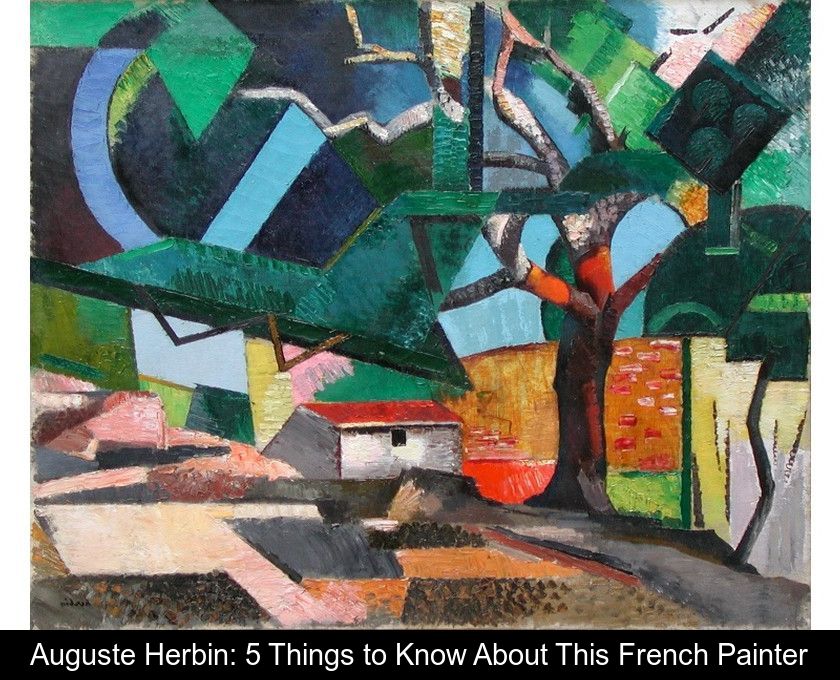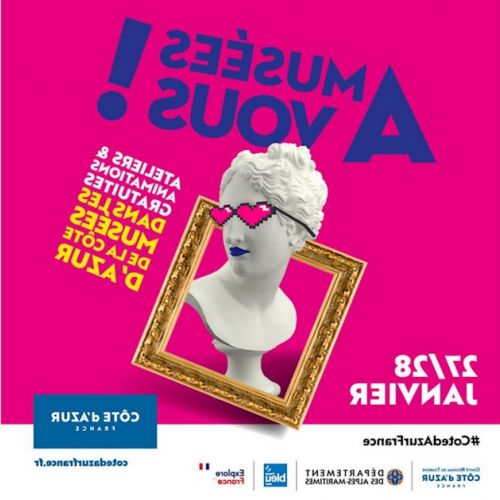Auguste Herbin: 5 Things To Know About This French Painter
French painter Auguste Herbin is less known than his contemporaries Braque and Picasso. This artist, once forgotten, was involved in all the avant-garde movements of the 20th century. Here are 5 things to know about his life and work.
He is originally from the north of France.
Auguste Herbin (1882-1960) spent his childhood in Le Cateau-Cambrésis in the North. The son of weavers, he took evening drawing classes before winning a scholarship to study at the Fine Arts school in Lille.
From his very first paintings, influenced by the Impressionists and Van Gogh, he demonstrated an early talent. A self-portrait from 1906 bears witness to his bold use of color, at a time when Fauvism was emerging.
He followed all the artistic movements of his time.
One of the distinctive features of the painter Auguste Herbin is his participation in all avant-garde movements, from post-impressionism to the most radical abstraction, including Fauvism and Cubism.
Simply by following the evolution of his work and style, one can trace the history of modern art of the 20th century. Initially a post-impressionist at the age of 20, he shifted his palette towards the Fauves around 1905-1906.
By 1908, his work transitioned towards Cubism and then shifted into abstraction after World War I. Between 1922 and 1925, the misunderstood painter, plagued by doubt, returned to a figurative style which he would later disavow.
From 1925, he decisively turned to abstraction in order to offer a universal art that could be appreciated without cultural references.
He is the inventor of a plastic alphabet.
Starting in 1942, Auguste Herbin embarked on the creation of a "plastic alphabet". The artist, captivated by Bach's The Art of Fugue and the poems "Voyelles" by Rimbaud and "Correspondances" by Baudelaire, developed a method of composition based on synesthesia.
On this matter, he wrote in 1949: "Like music, painting has its own alphabet which will serve as the basis for all combinations of colors and shapes." His alphabet consists of 5 geometric shapes, the 26 letters of the alphabet, the 7 musical notes, and a range of nuanced colors.
More precisely, this visionary artist envisioned a system of correspondences between geometric shapes, letters of the alphabet, colors, and musical notes.
In the 1940s and 1950s, the combination of these elements allowed him to create canvases that appear abstract but convey a message through colorful geometric patterns.
Auguste Herbin is a major artist to rediscover.
Even though he is largely unknown in his own country, Auguste Herbin deserves his place among the major artists of the 20th century. In his constant search for a universal artistic language, he has left us an immense legacy.
This French artist, who influenced Kandinsky, Vasarely, and the comic book author Hergé, has made a significant mark on the history of art. Even if his name has sometimes been forgotten, his influence has never really disappeared.
5- The Montmartre Museum is dedicating a retrospective to him.
Until now, only the Museum of Modern Art in Céret and the Matisse Departmental Museum in Le Cateau-Cambrésis had dedicated a major exhibition to Auguste Herbin.
In the spring of 2024, the Montmartre Museum in the 18th arrondissement of Paris will host the first Parisian retrospective dedicated to the artist. This exhibition, titled "Auguste Herbin, the Master Revealed", traces the major stages of his career that was very much in tune with the times.
If this presentation has piqued your curiosity, you have until September 15, 2024 to discover this major and yet little-known painter at the Montmartre Museum.










